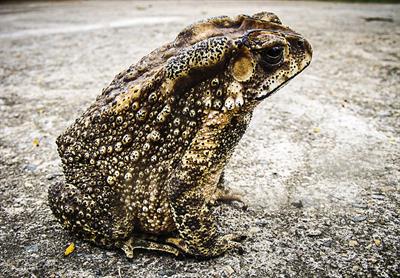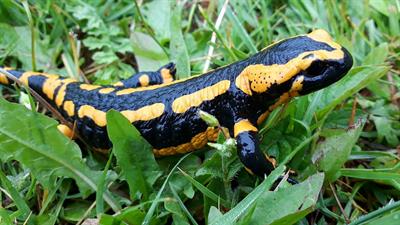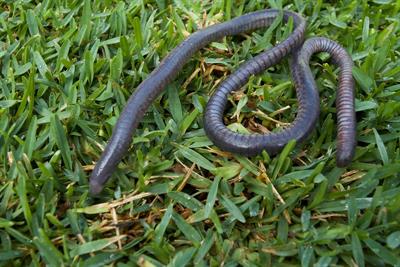PIRMĀ SEMESTRA NOSLĒGUMA TESTI
Read about amphibians, listen and learn new words.
(Lasi par abiniekiem, klausies un mācies jaunos vārdiņus!)
- Toad
Toads can be found in all but the coldest parts of the world. They are amphibians, meaning that they live on both land and water. However, toads generally spend more of their time on land than they do in the water. Toads have squat, plump bodies. They do not have tails. They range from about 2.5 to 25 centimeters long. Their skin is usually brownish olive, often with some darker spots.
Toads are typically covered with bumps that look like warts. When a toad feels threatened it releases poison from the bumps. The poison can sting an enemy’s eyes and mouth. The poison of some toads is strong enough to kill their enemies.
Toads are active mainly at night. They spend the day underground or hidden under leaves or stones. In the winter most toads enter a state of inactivity called hibernation. Some toads are inactive during hot and dry weather as well.
Toads move by short hops or by walking. They catch prey with their long, sticky tongues. Toads generally eat insects and worms. Some large toads, however, eat frogs and small rodents.

toad — [təʊd] — krupis
- Salamander
A salamander is an amphibian with a slender body and a long tail. They are related to frogs and toads. Salamanders look rather like lizards. But unlike lizards, they are covered with smooth, shiny skin. There are about 400 species, or kinds, of salamander. They include newts and mud puppies.
Salamanders live mainly in the northern half of the world. Like other amphibians, they can live either in water or on land. Salamanders especially like dark, wet places, like the woods.
Most salamanders are about 10 to 15 centimeters long. They have four short legs. They are usually brightly colored, often with spots or stripes. Salamanders can breathe through lungs or through special organs called gills. Some salamanders can take in oxygen through their skin.
Salamanders usually hide during the day and come out at night. They eat insects, small fish, worms, snails, and smaller salamanders. Salamanders have several ways to protect themselves from enemies. Most kinds can release a poison that tastes bad or causes pain. A salamander can also lash its tail to defend itself. If the tail breaks off, a salamander can grow a new one.

salamander — [ˈsæl.ə.mæn.də] — salamandra
- Newt
Newts enjoy wet environments such as forests and grasslands. They have the ability to breathe underwater and on land. Some newts live on both land and in water. Their skin is soft and moist, making humid and wet climates ideal. Newts range from 7 cm to nearly 10 cm long, with the females being slightly larger than the males. They have four fingers on the front two legs and five toes each on the back two legs. If a newt loses a tail, part of its spinal cord or its eyes, it have the ability to regenerate. Unlike salamanders, newts do not have costal or rib grooves along their sides.
Newts eat a diet of worms, small fish, snails and insects. Newts hunt by sight, so their prey must be moving for them to see it in order to attack. To fend off predators, newts have secret toxins in their skin that they secrete if needed. They also use bright underbelly colors to scare off any attackers.

newt — [njuːt] — tritons
- Difference between salamandra and newt
The main difference between salamander and newt is their places of living and their adaption to it. As adults, newts live a semi-aquatic to aquatic (water) life, while adult salamanders live a mostly terrestrial life (on the land). Most newts have webbed feet and a paddle-like tail, which make it easier to live in the water. Salamanders typically have longer and more rounded tails with well-developed toes for digging in soil.
- Caecilian
Caecilians are amphibians like frogs and salamanders, but they don’t have legs. They live in Asia, Africa and Central and South America. Caecilians spend their days in rivers and streams or burrowed under the ground. They don’t need to hear or see very well in the dirt. Most have very tiny eyes. Some caecilians have eyes that are covered with skin so they’re just bumps. Caecilians are gray, brown, yellow, orange or black. They can grow up to 1,5 m long. Most are less than 15 cm long. These interesting animals are carnivores. They eat worms, beetle larvae, small snakes and lizards. They’ll even eat each other. Caecilians have moist skin like salamanders. Some species have poisonous skin.

caecilian — [sɪˈsɪliən] — cecīlija
Atsauce:
https://kids.britannica.com/kids/article/toad/390140
https://sciencing.com/horned-frog-8745114.html
https://www.mnn.com/earth-matters/animals/blogs/what-difference-between-salamander-and-newt
https://easyscienceforkids.com/all-about-caecilians/